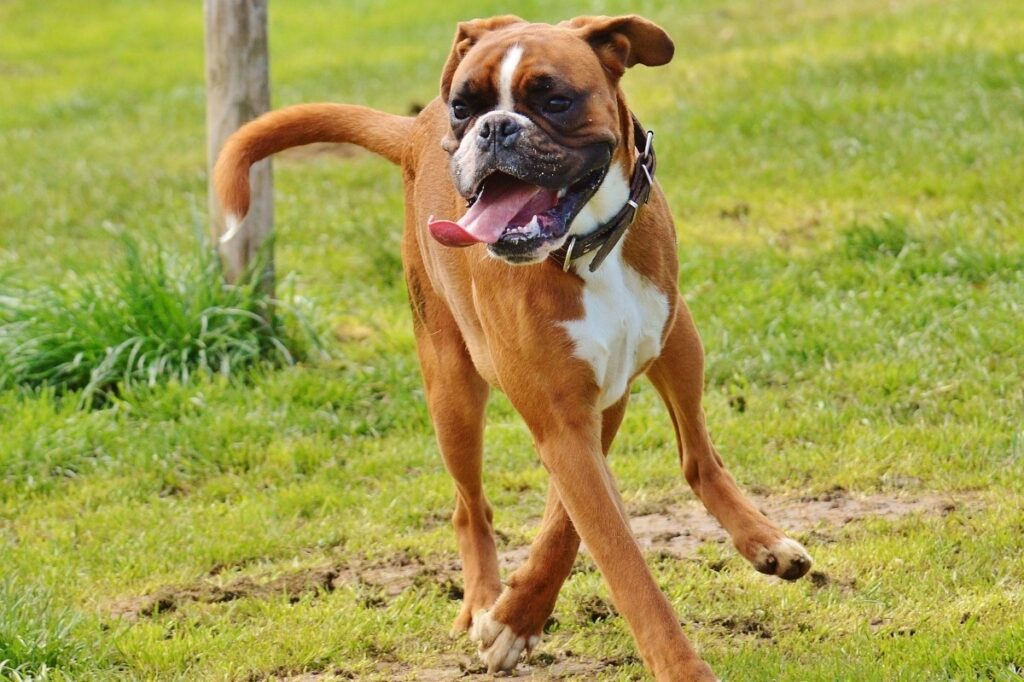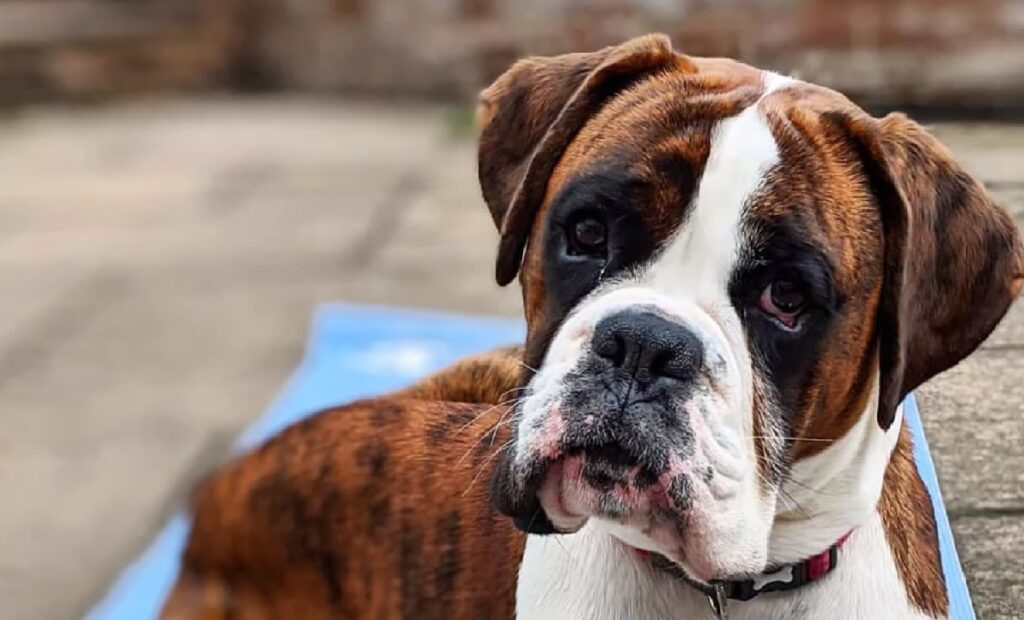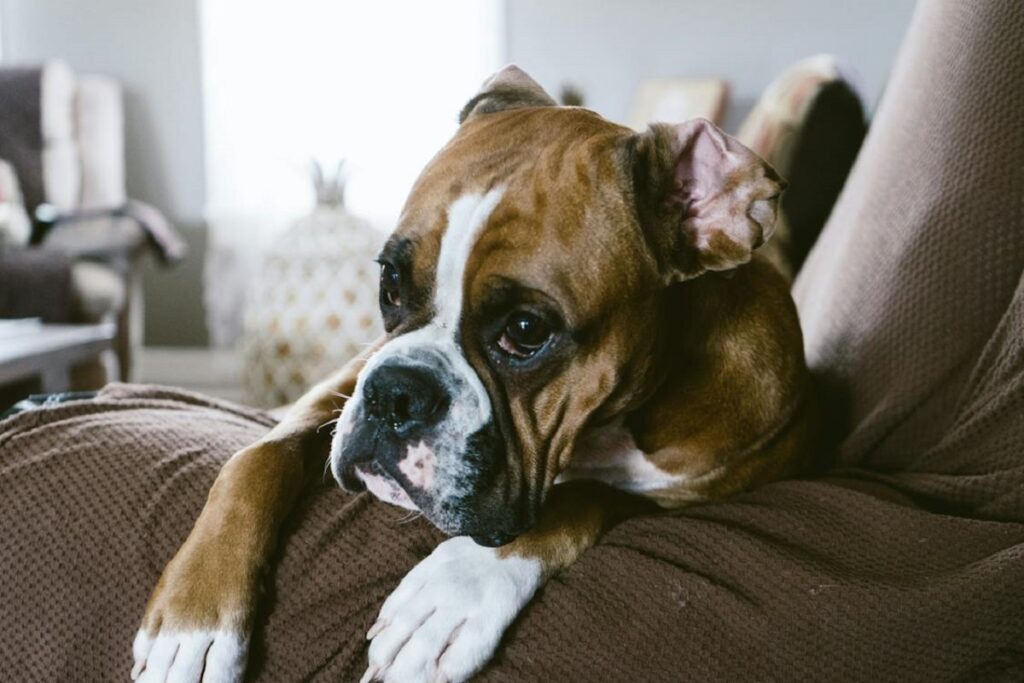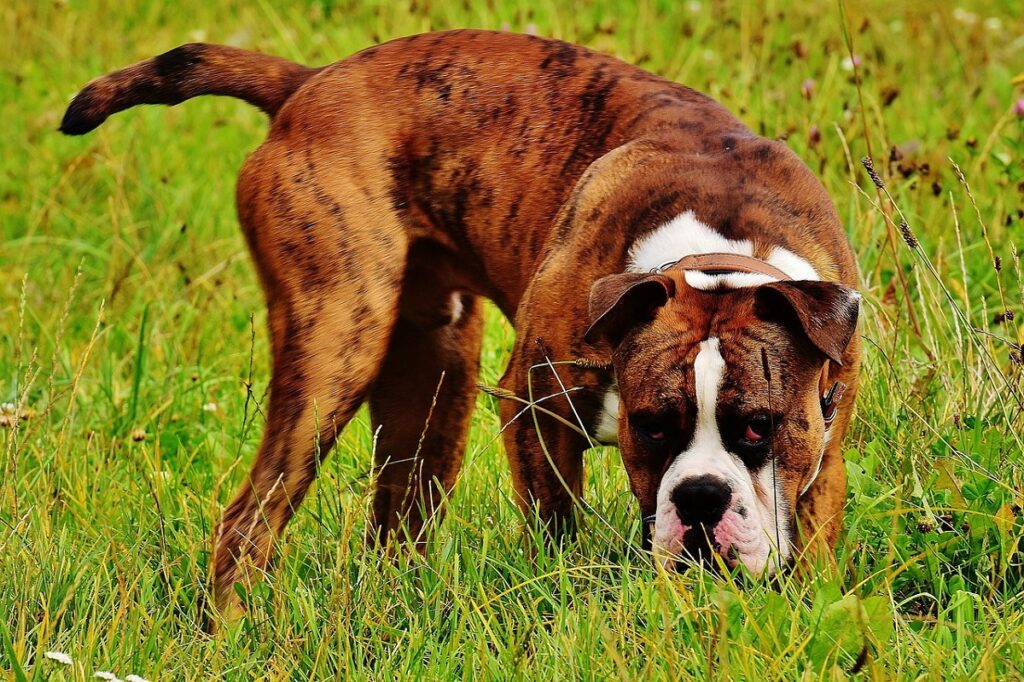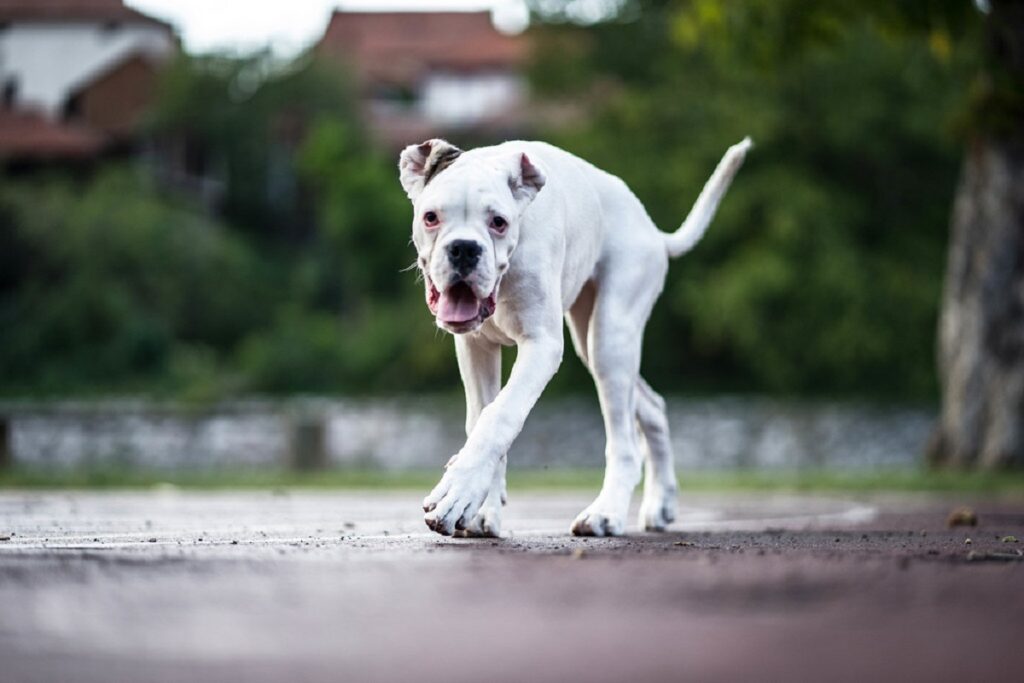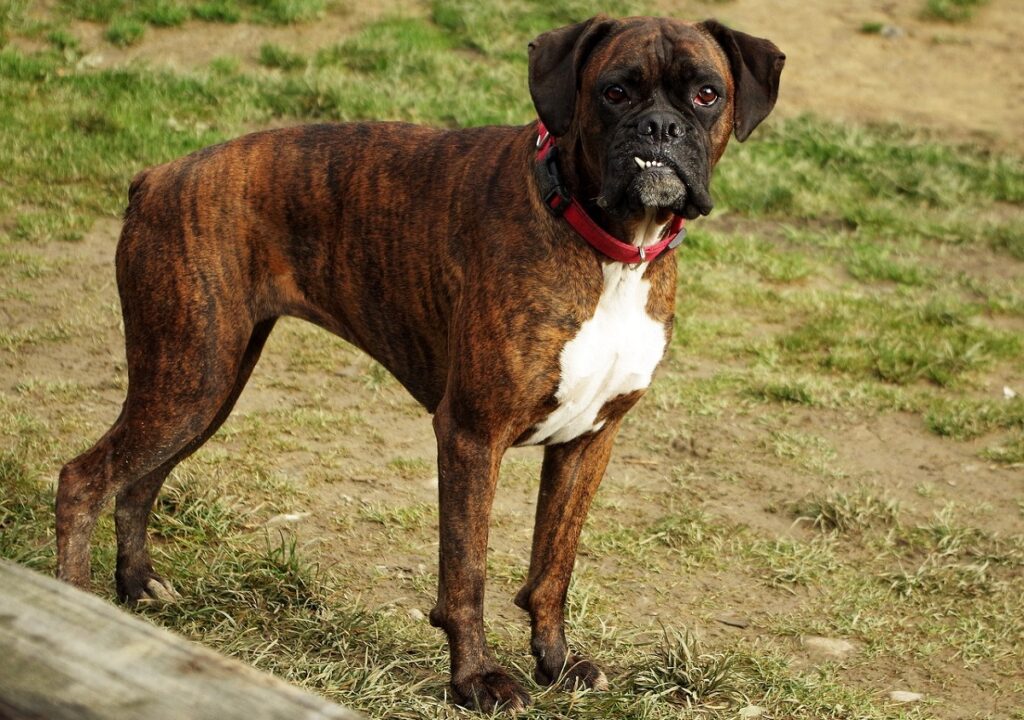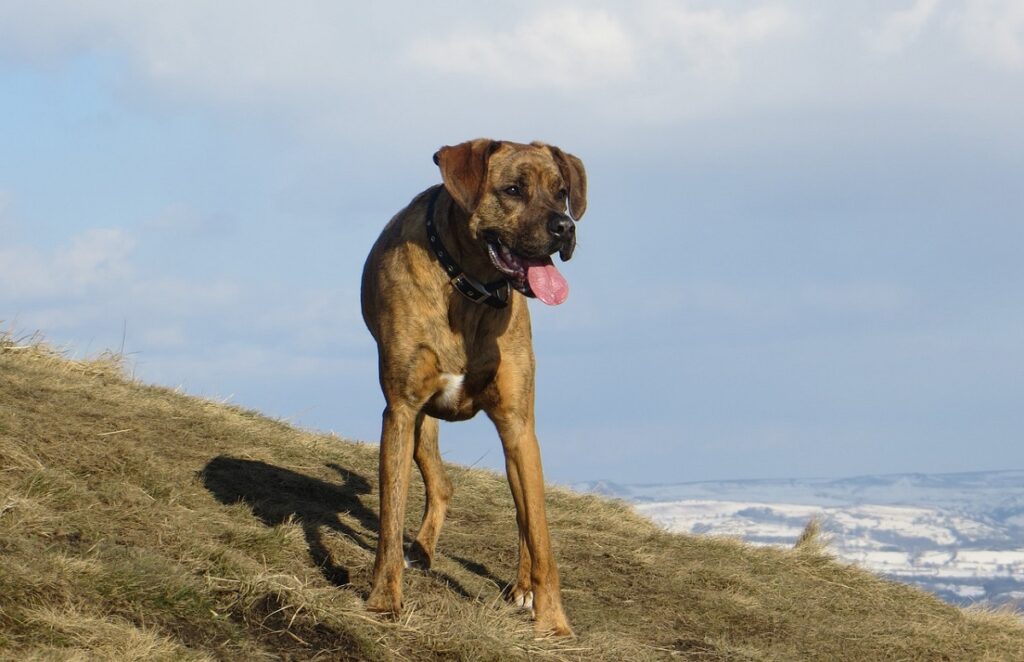Dive into the diverse world of Boxer dogs! Beyond their iconic playful energy and wrinkled charm, Boxers boast a surprising range of variations. From the classic fawn and brindle to the less common white and black, this “Exploring Breed Varieties” guide by Pet Yolo unveils the eight distinct types, highlighting their unique characteristics, temperaments, and care considerations. Discover which Boxer best suits your lifestyle and unlock the secrets behind this captivating breed’s multifaceted appeal.
Although Boxers are all the same breed, different types of Boxer pups exist.
How Are Boxers Classified?
Three countries breed them; so there are German Boxers, United Kingdom (UK) Boxers, and American Boxers. They can be fawn, brindle, or white. There are slight differences between those three types of Boxers. Also, some Boxer breeders crossed a Boxer and a Lab to produce a Boxer mix puppy called a Boxador.
They are classified by country and color/pattern on fur.
The German boxer has the biggest bone structure, wider thighs, and smaller noses. The UK Boxer is the most delicate and has smaller feet. The American boxer has less wrinkles, and the wrinkles are mostly around their muzzle. Also, the American Boxer has a wider muzzle than the UK Boxer and the German Boxer dogs. Boxer breeds also have a short and shiny coat.
Types of Boxer Dogs
Let’s take a look at the Boxer types:
1. American Boxer
ORIGIN
The first American Boxer was registered with the American Kennel Club (AKC) in 1904. The American Boxer breed standard colors are fawn and brindle. Boxers gained mass popularity in the 1950s when an American Boxer named Bang Away won the Westminster Dog Show and became famous.
The American Boxer dog has maintained a top 10 ranking in homes in the US since then.
The American Boxer is called a Boxer because when they play or fight, they use their front paws like a human boxer (like kangaroos!).
HEIGHT
They are generally 21.5 to 25 inches tall.
SIGNIFICANT CHARACTERISTIC
American Boxers have the following traits: active, protective, very trainable, courageous, muscular, athletic, intelligent, fun, good with kids, friendly, and playful. The American Boxer needs mental stimulation, and they love an adventure.
American Boxers have been police dogs, war canines, cattle herders/protectors, watchdogs, and protection dogs. The Boxer dog breed was originally bred as a guard dog. They are still excellent guard dogs — once a guard, always a guard!
Males weigh between 60 to 80 pounds, and females weigh 50 to 65 pounds. They are low maintenance in grooming, requiring a brushing every few weeks.
Boxers are on the list of popular police dog breeds.
2. German Boxer
ORIGIN
German Boxers’ ancestors lived in 2500 BC in the Assyrian empire. Big Bullenbeisser (“bull biter”) was a hunting dog. When German nobles’ estates were broken up, their lavish hunting escapades ended (yay!). They began breeding their Bullenbeisser with smaller English Mastiff-type breeds, and the modern Boxer puppy was created.
Like many other German dog breeds, the ancestors of the German Boxer breed were hunter-dog breeds.
The German Boxer and theAmerican or UK Boxerhave different bone sizes, with the German Boxer having the bigger bone structure.
HEIGHT
They are generally 21.5-25 inches tall.
SIGNIFICANT CHARACTERISTIC
The German Boxer comes in short yellow, brindle, black, white, and pied. German Boxers are calm, protective, loyal, silly, friendly, playful, good with children, have strong nerves, are very trainable, and are a bit wary of strangers.
The German Boxer is good with other pooches, cats, and other animals if socialized and trained young. The German Boxer needs mental and physical stimulation (like a nice walk).
The German Boxer breed also loves sports, and they are hard workers, intelligent, patient, alert, brave, and athletic.
3. English (UK) Boxer
ORIGIN
The Boxer dog arrived in the UK and other European countries at the end of the 1800s.
HEIGHT
They are typically 21.5-25 inches tall.
SIGNIFICANT CHARACTERISTIC
English Boxers and their German and American cousins are independent, silly, energetic, affectionate, brave, social, and intelligent. Even the polite (because Brits are known for being polite) English Boxer may be aggressive toward other dogs if not socialized.
According to the United Kennel Club, the English Boxer is fawn or brindle, and fawn can be light yellow to deep dark red.
The UK Boxer stands differently than the American Boxer and the German Boxer because the UK Boxer has differently shaped ankles, paws, and high knuckles — which meet the UK standard/breed standard. The Kennel Club’s (KC) standards are a little different from the American.
Like many other English dog breeds, English Boxers were used for hunting. American judges tend to prefer American boxers and UK judges like the United Kingdom Boxer. Breeders often mix bloodlines between English Boxer, American Boxer, and German Boxer.
4. Fawn Boxer
ORIGIN
Fawn Boxers were bred when the Boxer dog was initially created at the end of the 1800s. Fawn and brindle are the most common colors as well as the American Kennel Club standard colors.
HEIGHT
They are 21.5 to 25 inches tall.
SIGNIFICANT CHARACTERISTIC
The fawn Boxer dog shares the characteristics of the other Boxers bred in its country because color doesn’t affect personality.
5. Brindle Boxer
ORIGIN
Brindle boxers originated in the 1930s.
HEIGHT
They are usually 21.5 to 25 inches tall.
SIGNIFICANT CHARACTERISTIC
Brindle Boxers are one of a bunch of brindle dog breeds. They have the same temperament and personality as other Boxers: devoted, happy, loving, and social pups when raised in a loving home. Brindle isn’t a color; it’s actually a pattern of stripes. The stripes can be dark or light.
Tiger brindle, mahogany brindle, and reverse brindle are the three types of brindle.
These are the colors of brindle boxers:
- Light
- Golden
- Fawn
- Red
- Mahogany
- Dark
- Reverse
- Seal (very dark)
Boxer puppies have five possible markings:
- Black mask
- Black mask, white markings
- White markings (flashy coloring)
- Brindle
- Fawn markings
6. White Boxer
ORIGIN
They also originated in the 1930s.
HEIGHT
Their height can be 21.5-25 inches.
SIGNIFICANT CHARACTERISTIC
One in every four Boxers is white, some are deaf, and they are susceptible to sunburn. White Boxers are not recognized by the American Kennel Club, so breeders weren’t supposed to breed white dogs but they were born in litters sometimes.
In 2016, the American Boxer Club revised the Code of Ethics to allow White Boxers as companions and performance animals. 70-75% are born healthy. Tragically, breeders used to kill White boxers.
The White Boxer personality matches the description of the other variations of Boxers.
7. Reverse Brindle Boxer
ORIGIN
They originated in the 1930s.
HEIGHT
They stand 21.5-25 inches high.
SIGNIFICANT CHARACTERISTIC
A reverse brindle pattern happens when light stripes appear on a dark-colored background (such as fawn brindle on a black background), causing the coloring to appear solid and making the dog look like they have a dark coat.
8. Boxador
ORIGIN
They originated in North America in the 1990s.
HEIGHT
Their height is 23 to 25 inches.
SIGNIFICANT CHARACTERISTIC
A Boxador is one of the Boxer mixes. These cuties are social, affectionate, protective, friendly, playful, energetic, good with kids and dogs, and need a half hour of exercise each day (hiking, fetching, running).
Boxadors don’t like being alone for long periods and can become bored and destructive. Socializing and training them young helps. They may be difficult for novice owners to train.
A Boxador lives longer than a purebred Boxer. A pedigree lives 10-12 years, and Boxadors are estimated to live 12-15 years. Labs live approximately 11-13 years.
The AKC doesn’t recognize them because they are a mixed breed.
Boxers & Separation Anxiety
Boxers are prone to separation anxiety because they love their family, they are smart, and they need physical and mental stimulation. If your Boxer’s voice is hoarse when you come home, it may mean he was barking the entire time you were gone.
They can spiral into panic and throw their bodies against the wall. You’ll probably notice if there’s been destructive chewing. Some dogs pee or poop.
If your Boxer is exhausted, they may have been freaking out because of the loneliness and uncertainty as to whether you were going to return. Other indications of trauma are not eating, not playing, not exercising, not relaxing, and trouble sleeping. Drooling and pacing or other repetitive behaviors are also evidence that your pup is depressed from your abandonment.
To help your pup not suffer from separation anxiety, you should give them lots of exercise before you leave to wear them out. Leave an activity mat, puzzle, or a bone filled with natural peanut butter (no Xylitol) to occupy them.
You could provide a stuffed friend or a real dog to keep them company. Don’t act like leaving the house is a big deal. The sound of the TV or radio may comfort them.
They don’t like being confined in a very small area, so allow them enough space. Experiment with whether looking out the window calms or agitates them. Leave a light on. If nothing works, lavender and/or antidepressants like CBD for separation anxiety prescribed by your vet will help.
You might need a dog walker to come by if you’re at work for a long time or going somewhere else for a while. The second dog idea sounds fun!
FAQ
What Are the Two Breeds That Make Up a Boxer?
The German Bullenbeisser (“bull biter”) was bred with a smaller, mastiff-type breed from England.
Are Boxers Good for Families?
Yes! These family dogs are intelligent, easy to train, affectionate, good with kids, friendly, playful, protective, and devoted.
Is It Difficult To Train Boxers?
Boxer dogs are very intelligent and can learn easily with positive reinforcement. Socializing is important because they are protective.
What Breed of Boxer Meets Dog Show Standards?
Brindle and fawn in America. However, White Boxers meet the UK Boxers dog show standards.
Which Boxer Type Is the Best?
It’s a matter of personal preference. The differences are kind of small, and some are superficial (colors and patterns), except for the Boxador.
How Can I Tell What Kind of Boxer I Have?
Your professional Boxer breeder would have documentation of what type of Boxer bloodlines your pooch has — a German Boxer, a UK Boxer, or an American Boxer.
Wrap up
Whether a German Boxer, an American Boxer, or a UK Boxer, Boxer dog breeds are nice pets. Boxer dog breeds are really like children, and they are energetic, loyal, smart, and usually good with dogs and other animals if socialized young. The different types of boxers are somewhat similar except for some physical appearance traits like coat color and pattern.
As always, you can check Boxer rescue organizations and Petfinder to give a nice home to a Boxer who needs one!
The world of Boxer dogs extends beyond the common fawn and brindle varieties. This exploration of eight Boxer types, from the classic to the rare white and black, reveals the fascinating diversity within the breed. While color variations are visually striking, temperament and health considerations remain consistent across these types. Ultimately, choosing a Boxer should prioritize responsible breeding and individual dog personality over coat color, ensuring a happy and healthy companion for any loving home.


